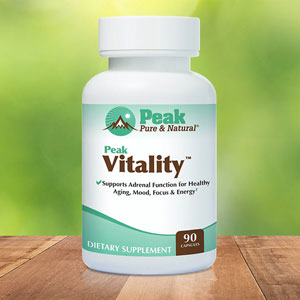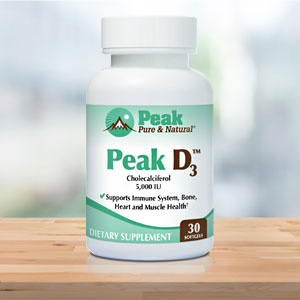Get Easy Health Digest™ in your inbox and don’t miss a thing when you subscribe today. Plus, get the free bonus report, Mother Nature’s Tips, Tricks and Remedies for Cholesterol, Blood Pressure & Blood Sugar as my way of saying welcome to the community!
4 common movements that cause back pain & what helps

Nearly 65 million Americans report episodes of back pain, while around 16 million adults experience persistent or chronic back pain, according to the Health Policy Institute.
Making matters worse, very few things work reliably to eliminate back pain, especially lower back pain, the most common complaint of all.
The thing is, much of our back pain is self-inflicted. And since there’s no reliable fix for back pain, the best thing you can do is to avoid movements and activities that cause it in the first place.
I recently came across an article describing some of the most common movements that tweak our backs. Here’s what to avoid, what to do instead and how to support your muscles and ease the pain…
Ditch these habits that hurt
The B.L.T. No, not the sandwich. This B.L.T. stands for “bend, lift, and twist.”
Doing all three at once “maximizes stress on the disc, making it more likely to rupture,” says Dr. Arthur Jenkins, a New York neurosurgeon who specializes in spinal surgery.
And it doesn’t take something as strenuous as snow shoveling to injure yourself this way. Something as simple as twisting around to grab shopping bags from the back seat of your car can do it.
One way to avoid this injury is to take a few seconds to recognize the moves you are about to make and do them separately, rather than doing them all at once.
Warm up before playing. You may not think of golf or table tennis as high-risk activities. But they often involve sudden twists that can be jarring on the spine.
Flexibility is key. Warming up and stretching before and after your game will keep your spine flexible enough to avoid injury.
Don’t overload your carry-on bag when traveling. Lifting a heavy bag over your head is not a motion you do every day. Your back is not used to it, and injury can occur easily.
Before leaving home, see if you can easily lift your bag to waist level. If not, unload a few items. On the plane, lifting your bag to your waist and then up over your head should be a two-step process because the muscles that lift the bag from floor to waist are stronger than those that take it from waist to overhead.
Remember this as well when you go to store a box of seasonal decorations or clothes on a top shelf of your storage closet.
Avoid sit-ups. According to Harvard Health, sit-ups push your curved spine against the floor and work your hip flexors, the muscles that run from the thighs to the lumbar vertebrae in the lower back. When the hip flexors are too strong or too tight, they tug on the lower spine, creating lower back discomfort.
If you want to strengthen your core, exercises such as planks, Plates, swimming, yoga and the elliptical machine “are a lot healthier for your back in general,” says Dr. Jacob Joseph, a neurosurgeon at the University of Michigan Health specializing in spinal injuries.
Nutrients that support your aching back
No matter how careful you are, anyone can overdo it and experience back pain. But the more active you are, especially working to strengthen your core to support your back, the stronger you are.
That added strength and flexibility could mean fewer injuries and quicker healing. The right nutrition can also help in this department…
A study into nutritional considerations for injury prevention and recovery suggests promoting injury-healing amino acids and protein intake, antioxidants, creatine and omega-3s.
For muscle injury.:
- Creatine is an amino acid that can boost muscle strength and endurance. It can keep your back (and other) muscles from atrophying if you’re immobilized due to a back injury.
- Omega-3s help prevent muscle loss while recovering from an injury and can help with pain.
- Resveratrol is an antioxidant that has been found to help astronauts maintain their muscle strength on long missions.
- Vitamins C and E, also antioxidants, fight against the increased production of reactive oxygen species (ROS) after muscle injury. ROS will damage the cell’s basic building blocks, including DNA, proteins, and lipids.
For joint and tendon injury:
- Collagen is a natural protein in your body that gives your cartilage its strength. Hydrolyzed collagen powder is a great choice.
For bone injuries (and pain):
- Vitamin D and calcium support bone health, and healthy bones heal better.
Previous research has also linked low vitamin D levels to back pain. Women who were deficient in vitamin D reported more cases of severe back pain, more fractures, disc degeneration and greater limitations in performing activities of daily living than women with adequate levels of vitamin D.
Research has also indicated that vitamin D affects the body’s inflammation response in a way that lowers the sensation of pain, so it’s not only helpful in supporting your bones but also in alleviating pain.
Editor’s note: Did you know that when you take your body from acid to alkaline you can boost your energy, lose weight, soothe digestion, avoid illness and achieve wellness? Click here to discover The Alkaline Secret to Ultimate Vitality and revive your life today!
Sources:
The worst habits for your back, according to spine surgeons — NY Times
Chronic Back Pain — Health Policy Institute
Want a stronger core? Skip the sit-ups — Harvard Health
Back, Lower Limb, and Upper Limb Pain — CDC
Nutritional Considerations for Injury Prevention and Recovery in Combat Sports — Nutrients














